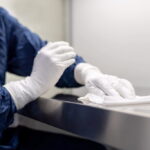Healthcare food services are indispensable to the quality of care provided to patients. These services not only ensure that patients are fed, but they also contribute to their recovery process. A notable trend in this sector is the intersection of packaging and nutrition. It’s not just about providing sustenance, but ensuring it’s adequately packaged and nutritious. By examining this trend closely, people can gain critical insights on how to boost healthcare food services.
The critical points in food production occur at the beginning, with the sourcing of ingredients and the creation of meals. Here, it’s important to maintain strict standards of quality and safety. This is even more crucial when preparing food for a healthcare environment where patients’ immune systems may be compromised.
Understanding The Importance Of Packaging In Food Services
Packaging plays a pivotal role in healthcare food services. Not only does it protect food from contamination, but it also maintains its nutritional content. By using packaging that can withstand different temperatures, healthcare facilities can ensure that meals are kept fresh until the time of consumption. This, in turn, maintains the integrity of the food’s nutritional content.
Enhancing The Dining Experience Through Innovative Packaging
Innovative packaging can make a significant difference in enhancing the patient’s dining experience. It can keep food warm, make it easier to handle, and even add an aesthetic touch.
For instance, compartmentalized trays can separate different food items, preventing them from mixing and helping to preserve their individual flavors. Packages with handles can make it easier for patients to carry their meals. Moreover, attractive packaging can also make meals more appealing to patients, encouraging them to eat more and aid in their recovery.
Balancing Nutrition And Sustainability In Packaging
When considering packaging options, sustainability should be a key factor. Plastic containers contribute significantly to environmental pollution. Therefore, healthcare food services should strive to balance nutrition and sustainability in their packaging decisions.
A promising solution is the use of biodegradable packaging materials. Such materials not only help in reducing the carbon footprint but also preserve the nutritional value of the food. Additionally, the use of clear packaging can help patients identify their food, ensuring they receive the correct meals.
Power Of Nutrition In Patient Recovery
The power of nutrition in patient recovery is indisputable. Adequate nutrition can speed up recovery, reduce complications, and even shorten hospital stays. Healthcare food services must prioritize providing nutritious and well-balanced meals to patients.
For instance, patients with specific dietary needs such as diabetics or those with heart conditions may require low-sugar or low-sodium diets. By tailoring meals to individual dietary requirements, healthcare facilities can contribute significantly to patient recovery. The synergy of well-planned packaging and carefully considered nutrition is paramount in boosting healthcare food services.
Technology And Research In Healthcare Food Services
Technology and research are valuable tools for healthcare food services seeking to overcome barriers in this sector. From innovative packaging designs to nutritional research, these resources can lead to breakthrough solutions. For example, new packaging technologies can help maintain the temperature and freshness of food, preserving its nutritional content. Similarly, cutting-edge research can help design diets that maximize nutrition without compromising taste and variety.
Advancements in food science and technology are also making it possible to extend the shelf-life of meals without adding artificial preservatives, ensuring patients receive fresh and nutritious food.
Empowering Staff And Patients
Education can play a crucial role in boosting healthcare food services. This involves training staff on the importance of nutrition and the impact of packaging on food quality. Additionally, patients can benefit from education about their diets, helping them understand the importance of the food they consume during their hospital stay.
This is where dietitians and nutritionists come into the picture. They can educate both healthcare staff and patients about balanced diets and nutritional requirements.
A Holistic Approach To Healthcare Food Services
In the broader context of healthcare, food services shouldn’t exist in isolation. Rather, they must work in tandem with other healthcare aspects, including clinical care, physical therapy, and psychological support.
Implementing a holistic approach means that every meal is considered as part of the patient’s overall treatment plan. The importance of this approach is two-fold. First, the food provided acts as a form of nutritional therapy, aiding the recovery process. Second, it creates a more pleasant hospital environment, enhancing the patient’s overall experience.
This comprehensive approach extends beyond the patient to involve the healthcare providers as well. This includes the chefs, dietitians, nurses, and doctors who collectively play a part in the patient’s food experience. Their roles aren’t just about executing their respective duties; it’s about understanding the interconnectedness of their roles in achieving optimal patient health.
Conclusion
The harmonious integration of packaging and nutrition is an essential strategy to bolster healthcare food services. When implemented effectively, this approach can enhance patient experience, boost nutritional intake, and even contribute to a sustainable environment. Consequently, hospitals and healthcare institutions should invest in this strategy to improve patient care and expedite recovery.
Read Also
- The Benefits of Contract Labor Staffing in HealthcareThe most successful healthcare facilities today aren’t just reacting to crises—they are building workforce resilience to withstand them. Unpredictable patient demand, coupled with persistent nursing shortages, has made the traditional staffing model obsolete. Relying on mandatory overtime to cover a sudden surge in capacity is a recipe for high turnover and rising employee burnout relief… Read more: The Benefits of Contract Labor Staffing in Healthcare
- Management Reinforcement for Healthcare Providers in a Shifting SystemHealthcare is changing faster than ever. So, providers are feeling the pressure to keep up. New technology, changing patient needs, and constant rule updates make it tough for managers to stay on top. Strong leadership helps teams work better, give great care, and stay happy in their jobs. Here’s how healthcare leaders can strengthen their… Read more: Management Reinforcement for Healthcare Providers in a Shifting System
- Why Effective Disinfection Remains the Foundation of Public HealthFrom hospitals and schools to transport hubs and food production sites, disinfection is central to breaking the chain of infection and protecting community health. The COVID-19 pandemic highlighted how crucial surface hygiene and environmental control are in reducing the spread of harmful microorganisms. Yet, beyond emergency response, routine and validated disinfection practices remain the cornerstone… Read more: Why Effective Disinfection Remains the Foundation of Public Health




